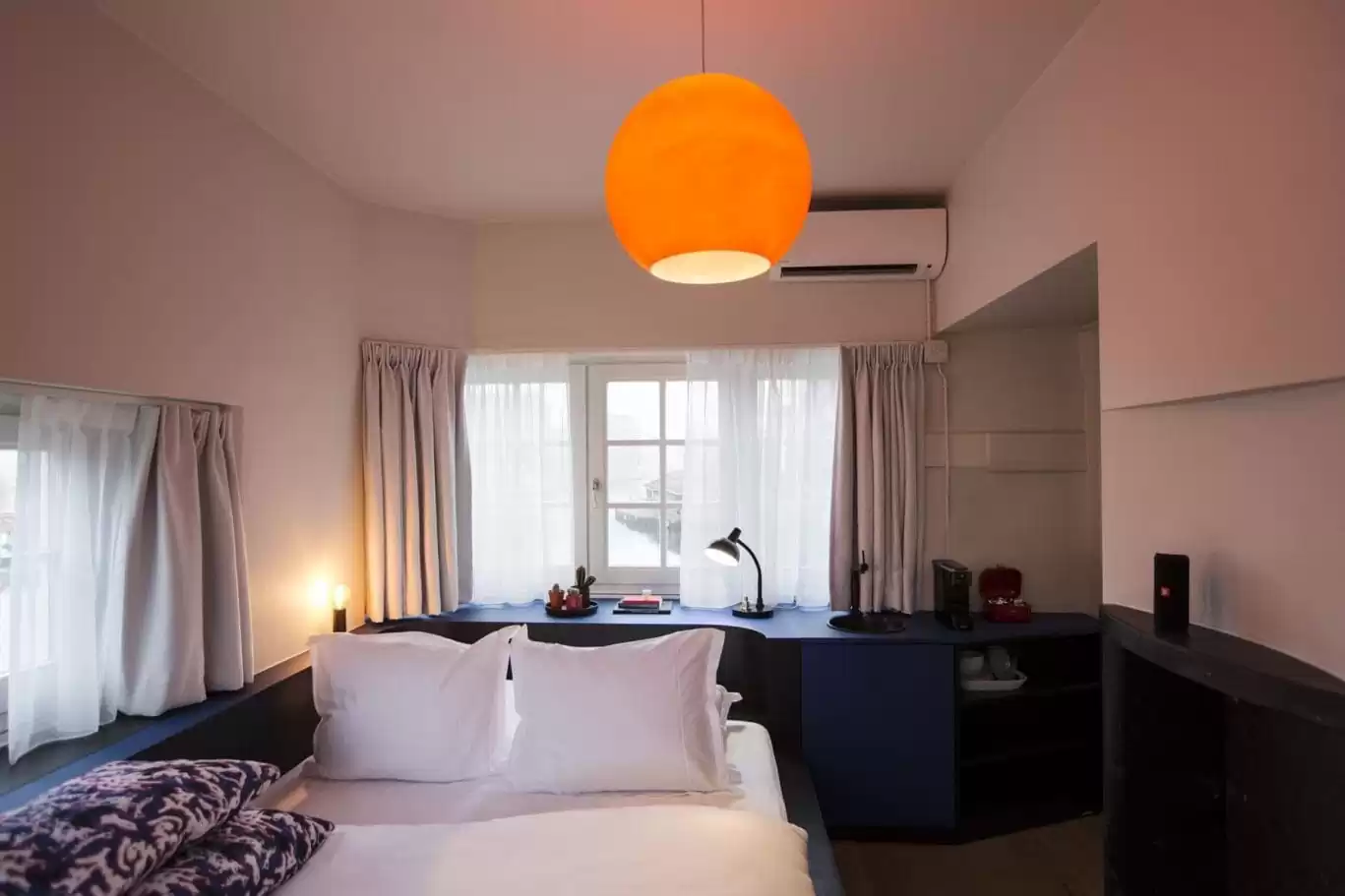Wake up to a view of a 17th century Dutch windmill, nestled close to local cafés in hip West Amsterdam. Take a leisurely 18-minute stroll to the popular 9 Streets for shopping nirvana or stay closer to home for an expert espresso and a delicious local pastry. Amsterdam Central Station is directly accessible by bus (17 minutes).
From 1933 to 2017 the Beltbrug bridge house accommodated the city’s bridge keepers. In 2017 the bridge house started a new chapter as one of 28 suites for SWEETS hotel.
Architect 1933: Pieter Lodewijk Kramer
Architect 2017: Space&Matter
Architectural Style: Amsterdam School
Location: Tweede Hugo de Grootstraat
Waterway: Kostverlorenvaart
Bridge Type: Bascule Bridge
The Beltbrug bridge house was built in 1933 according to a design by Pieter Lodewijk Kramer and forms an exception in his oeuvre. The building is characterized by yellow brickwork, interspersed with blocks of natural stone. Moreover, the building has a flat roof, whereas in his other designs Kramer experimented with whimsical, imaginative roof forms. Kramer designed a flat roof surface here in order to tie the building to the architecture of the neighbouring district of Landlust. Landlust was built in the early thirties in accordance with the principles of the Nieuwe Bouwen, or Dutch Modernism. The open-row layout was intended to provide light, air and space and so anticipated the 1935 General Expansion Plan for Amsterdam by architect and urban planner Cornelis van Eesteren. Van Eesteren and Kramer were poles apart with regards to theoretical matters and design, but their two styles appear closer in this design for the Beltbrug bridge house.
Before you book a SWEET stay, please read our house rules:


Still haven’t found what you’re looking for? Keep exploring other bridge houses.